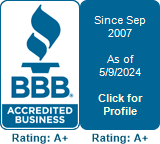5 Types of Bookkeeping Errors and How to Avoid Them
- By Admin
- •
- 26 Apr, 2022
- •
Errors in bookkeeping can have a large impact on your finances compared with their size and the ease at which they happen. The best way to combat these errors is to understand what can happen and the best ways to either catch them or prevent them outright. Here are five of the primary forms of bookkeeping data entry errors and what you can do about them.
1. Errors of Omission
Simply put, this error describes a transaction that was not recorded. These are vendor invoices that get lost on someone's desk, checks that aren't recorded, or cash payments that don't get added to the cash balance.
The most common way to prevent missed transactions is to increase organization, standardize procedures, and ensure enough time for bookkeeping tasks. In addition, regular reconciliation helps identify missing items after the fact.
2. Errors of Transposition
Transposition refers to switching two digits in a string of numbers. It's a simple and common data entry error, particularly in busy offices. Rather than entering an invoice for $490, the amount is recorded as $940.
The good news is that the transposition of two adjacent numbers is often identified because the resulting imbalance is divisible by 9. In this example, the difference of $450 is divisible by 9. If a transposition does get by you, diligent reconciliation of bank statements, payment accounts, credit card entries, and other accounts will help make them visible.
3. Errors of Commission
To make a commission error means to enter a transaction into the wrong sub-ledger. It's a payment applied to the wrong customer account or the wrong invoice. It could also be an expense recorded as being office supplies when it should really be shipping supplies. In this case, your financial statements will be correct, but the sub-account (such as the vendor's amount due) is incorrect.
Reconciliation is a good way to catch these errors. Compare vendor statements as they arrive, for instance, to confirm that your accounts payable ledger has the same information as the vendor's accounts. Having an outside bookkeeper or accountant do checkups on your books can also provide an independent eye to notice changes in patterns that may indicate errors of commission.
4. Errors of Reversal
Double-entry bookkeeping keeps everything balanced through the use of either debits or credits. But this means that you can occasionally post a transaction to the wrong side of this equation. An incoming vendor invoice might be accidentally posted as an outgoing customer invoice, for example.
One way to prevent this category of mistakes is to separate accounting tasks, both physically and when they are done. Keeping income transactions apart from expense transactions — and keying them at different times — creates more continuity and leaves less chance of making the wrong choice.
5. Errors of Principle
As you manage the books for your small business, you'll learn about the Generally Accepted Accounting Principles (GAAP). GAAP creates standards that businesses abide by in order to ensure that statements are reasonably reliable and can be compared on equal terms. So when an entry does not follow GAAP standards, it creates an error of principle.
The more you and your staff learn about GAAP, the better you will be at following its guidelines. If you have questions about how to enter a transaction, consult with an accountant or bookkeeper rather than guessing. And as you come to understand why certain rules are important or beneficial, you can reason better on how to apply them in your bookkeeping.
Where to Learn More
Want to know more about preventing and fixing these or other common mistakes made during bookkeeping? Start by meeting with the accounting pros at Williams & Associates Tax Services. We'll help you devise better bookkeeping systems, reconcile and do regular reviews, and understand how GAAP helps you. Call today to make an appointment.












